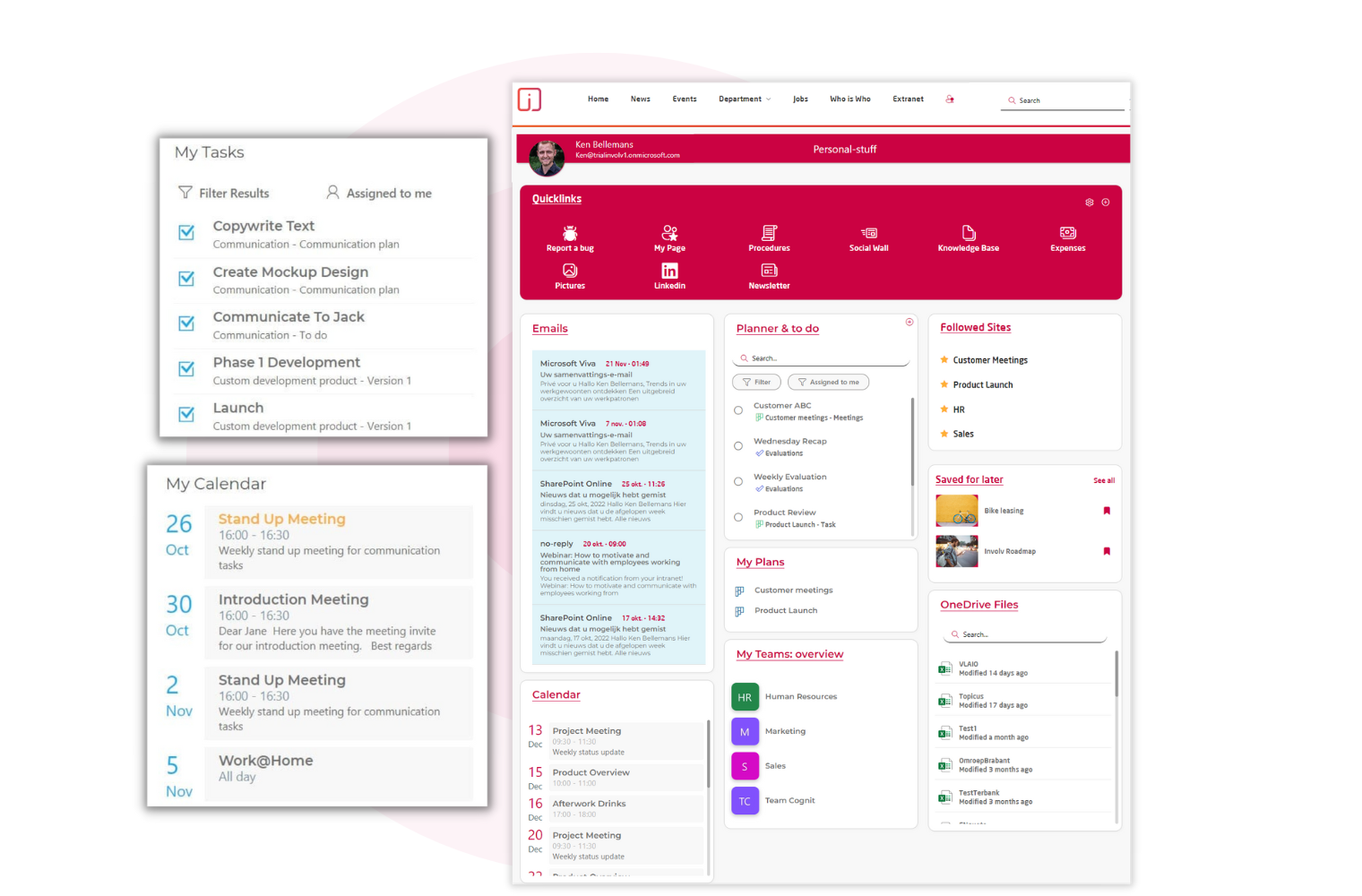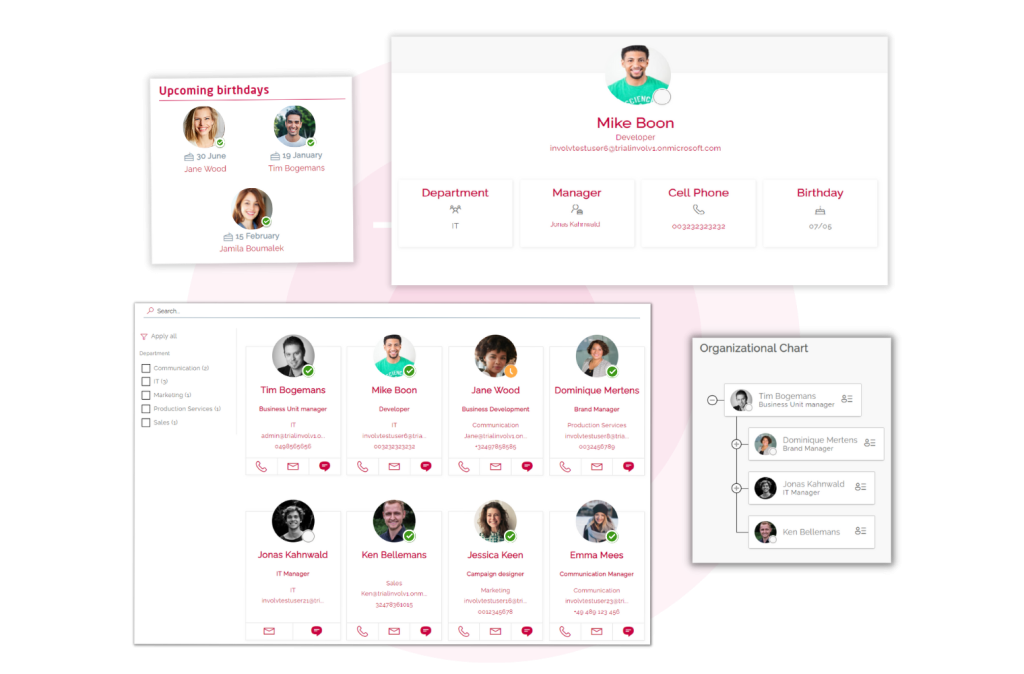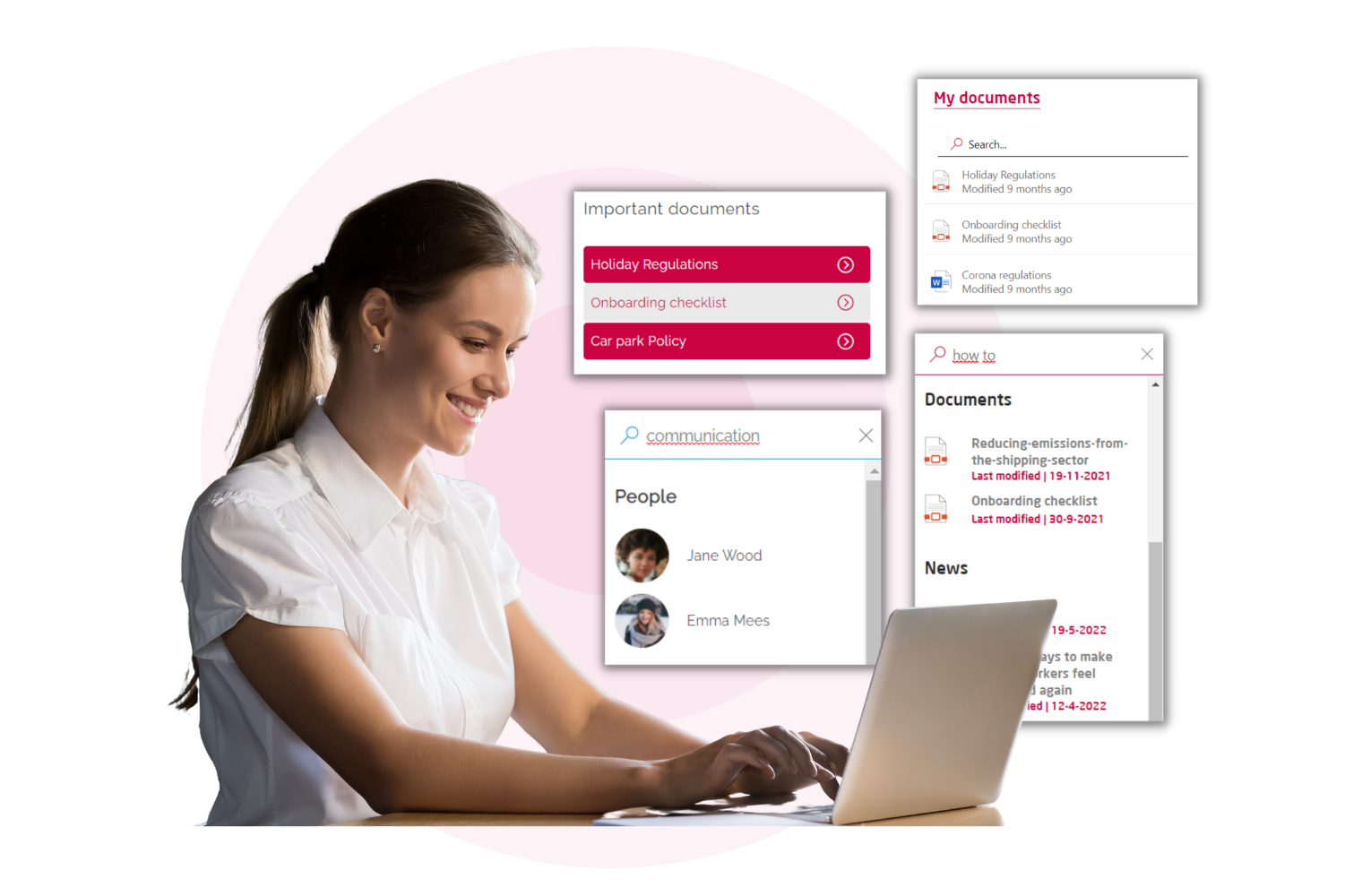Communication is the lifeblood of any organisation. It’s how ideas are shared, decisions are made, and progress is monitored. With the increasing complexity of modern workplaces, effective internal communication has become more critical than ever. This is where the Communication Matrix, a framework that identifies seven levels of communication, comes into play.
By understanding and applying the Communication Matrix to internal communication, organisations can improve their efficiency, collaboration, and overall success.
In this blog, we will explore what the seven levels of communication are, ways to use each to improve internal comms, and suggest how you can use your intranet to create a supportive environment that enables seamless communication between employees, teams and departments.
Level 1:
Intrapersonal communication: self-communication, thoughts, and self-talk
Intrapersonal communication is the most basic level of communication. It’s the conversations we have with ourselves. It involves our thoughts, emotions and self-awareness.
Intrapersonal communication is essential for decision-making, self-reflection and personal growth. Encouraging employees to develop their intrapersonal communication skills will therefore significantly improve their decision-making and relationship-building.
Carve out time for your colleagues to engage in self-reflection, set personal goals, and practice mindfulness. Offer workshops and training sessions focused on emotional intelligence to equip your team members with the tools to better understand their own emotions and those of their colleagues.
How to use your intranet to improve intrapersonal communication skills
Although an intranet isn’t directly involved in intrapersonal communication, it can indirectly enhance it. For instance, it can play host to resources such as articles, blogs, or training materials that employees can access to improve their knowledge, leading to a better understanding of their roles and better self-talk. Employees can also create their own personal page that includes links to their day-to-day tasks and overarching goals set for the year ahead.

Level 2:
Interpersonal communication: one-on-one communication
Interpersonal communication is the direct communication between two people. This includes both verbal and non-verbal cues, such as tone, gestures and facial expressions.
Effective interpersonal communication is crucial for building and maintaining relationships, resolving conflicts and collaborating with others. Creating an environment that fosters open and honest dialogue is therefore the foundation of effective internal communication.
Provide training and resources on conflict resolution, negotiation and effective feedback to strengthen interpersonal relationships within your organisation. Encourage employees to engage in active listening, empathetic responses and assertive communication.
How to use your intranet to improve interpersonal communication skills
A modern intranet with an up-to-date People Directory means employees can search for colleagues by name, department or skill and connect with them from within the directory. If the intranet is integrated into Teams, they’ll even be able to see who’s available or not thanks to their Teams availability status.

Level 3:
Group Communication: communication within small groups
Group communication is comms that takes place within small groups, projects, teams or departments. It involves coordinating ideas and opinions, as well as managing group dynamics, roles and responsibilities. Group communication is essential for teamwork and collaboration.
High-performing teams are built on open communication and collaboration. Strong teams have clearly established roles, responsibilities and expectations.
Regularly holding team-building exercises and activities can strengthen group dynamics and enhance communication skills. Encourage team members to share ideas, ask questions, and provide constructive feedback.
How to use your intranet to improve group communication
All modern intranets have features like forums, group chats and project management tools that can enhance group communication. These tools help teams to collaborate and communicate in real-time, sharing ideas, files and progress updates. Departments or teams can even build their own personalised intranet sites that host specific content, documents and tools.

Level 4:
Organisational communication: communication within large organisations
Organisational communication focuses on communication within larger organisations, such as businesses or governmental institutions. It includes formal channels, like memos and reports, and informal channels, such as workplace culture and office gossip. Organisational communication is crucial for maintaining coordination, motivation and productivity within an organisation.
To ensure the smooth flow of organisational communication, establish clear communication channels and protocols. Make use of both formal channels, such as newsletters, intranet updates and company-wide meetings, and informal channels, like team huddles and one-on-one conversations.
Create a culture of transparency by encouraging open lines of communication between different levels of management and facilitating opportunities for employees to share their ideas and feedback.
How to use your intranet to improve organisational communication
An intranet is a crucial tool for facilitating organisational communication. With the right information architecture in place, it can be the best platform for sharing company-wide news, policy updates, or changes in procedures. News items can be highlighted on the homepage carousel or added to specific department sites using audience targeting. Intranets also serve as an information hub for HR resources, training materials and other organisational information.

Level 5:
Public communication: communication with a large audience
Public communication refers to addressing larger audiences, such as giving speeches, conducting interviews, or writing articles for the public. It involves conveying information, persuading, or entertaining a diverse group of people.
Sharing success stories and celebrating achievements are some of the best ways to use your company’s comms platform to inspire and motivate your employees. Share news, updates, as well as personal stories with your team to create a sense of pride and purpose. Celebrate organisational achievements and acknowledge individual contributions to foster a culture of recognition and appreciation.
How to use your intranet to improve public communication
An intranet is the perfect channel to broadcast messages and news to all employees, serving as a platform for public communication within the organisation. An intranet should be used for company-wide announcements, updates or news.
For off-site or deskless employees with access to your intranet’s mobile app, you can alert them with hot-off-the-press news or incidents using push notifications.
Digital signage, streamed directly from your intranet, is also a great way to spread your message more widely across the organisation, particularly when colleagues are ‘offline’ as they move around the building.

Level 6:
Mass communication: communication through mass media
Mass communication involves the dissemination of information to a large audience through channels, such email, newsletters and the intranet. Mass communication aims to inform, educate, or entertain a wide audience and plays a significant role in shaping opinion and culture.
Keeping employees informed and engaged about company updates, industry news, and upcoming events helps to keep them engaged and connected. It’s essential to create a culture that encourages employees to share their stories, insights and ideas.
How to use your intranet to improve mass communication
While an intranet typically serves a single organisation (and thus isn’t ‘mass media’ in the traditional sense), it can function in a similar way within that organisation. Information, updates, or educational content can be made available to all users simultaneously, akin to mass communication, on the intranet homepage or sent out as an alert on the mobile app.
Level 7:
Cross-cultural communication: communication between different cultures
Cross-cultural communication focuses on comms between people from different cultural backgrounds. It involves understanding and navigating diverse values, beliefs and customs to promote effective communication across cultural boundaries. Cross-cultural communication is essential for businesses spread across regions, countries or continents.
Embracing diversity and inclusion comes from the top. So, it’s important to provide diversity and inclusion training for all employees so they can understand and appreciate their colleagues’ different cultural perspectives. Create a workplace culture that values and celebrates diversity by implementing inclusive policies, practices, and communication strategies.
How to use your intranet to improve cross-cultural communication
Multinational organisations can use an intranet as an inclusive tool by adding a multilingual feature, so employees can choose and set the language they’d like to read news, events, jobs, and FAQs in. Plus, intranets can play host to an events calendar that highlights your company’s training and workshops on cross-cultural collaboration.

For further tips on how to use your intranet to improve your internal communication skills watch our on-demand webinar: The 7 Levels of communication that create the communication matrix or book a demo
with one of our friendly experts today.


